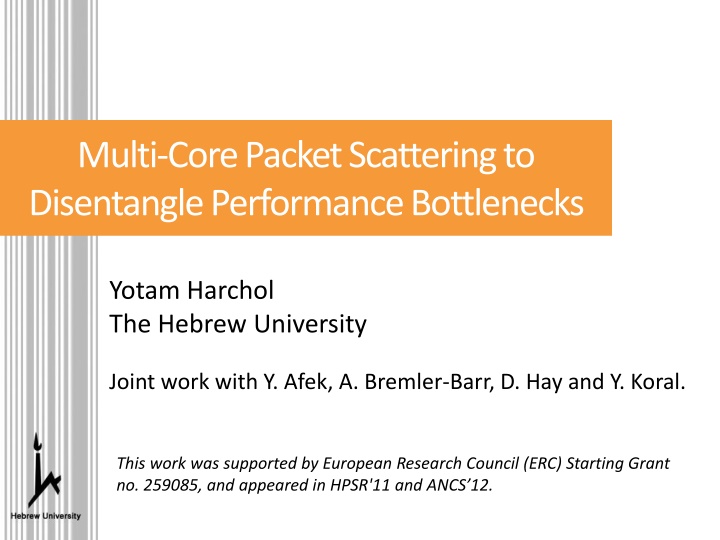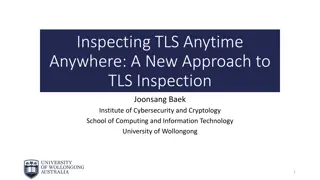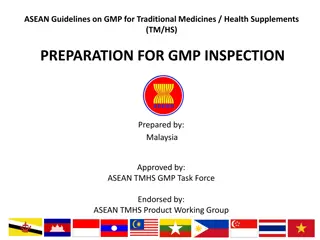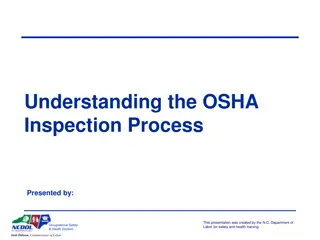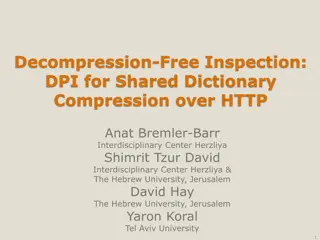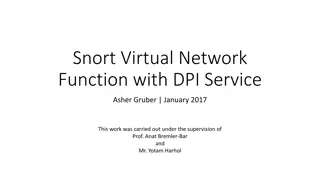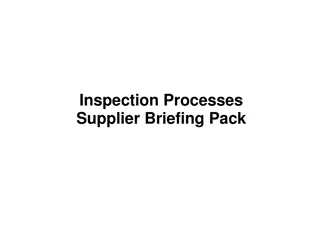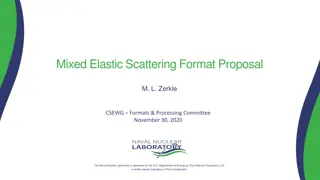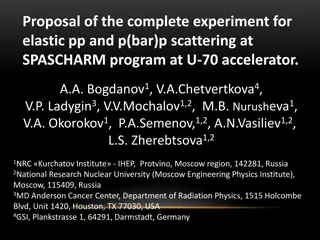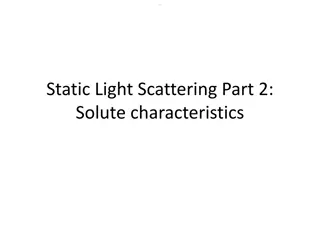Enhancing Network Security Through Multi-Core Packet Scattering and Deep Packet Inspection
Explore the use of multi-core systems to tackle performance bottlenecks in network intrusion detection systems, specifically focusing on deep packet inspection. Techniques such as load balancing and pattern subset scanning are discussed to optimize DPI processes and improve overall network security against DoS attacks and malicious packet intrusions.
Download Presentation

Please find below an Image/Link to download the presentation.
The content on the website is provided AS IS for your information and personal use only. It may not be sold, licensed, or shared on other websites without obtaining consent from the author.If you encounter any issues during the download, it is possible that the publisher has removed the file from their server.
You are allowed to download the files provided on this website for personal or commercial use, subject to the condition that they are used lawfully. All files are the property of their respective owners.
The content on the website is provided AS IS for your information and personal use only. It may not be sold, licensed, or shared on other websites without obtaining consent from the author.
E N D
Presentation Transcript
Multi-Core Packet Scattering to Disentangle Performance Bottlenecks Yotam Harchol The Hebrew University Joint work with Y. Afek, A. Bremler-Barr, D. Hay and Y. Koral. This work was supported by European Research Council (ERC) Starting Grant no. 259085, and appeared in HPSR'11 and ANCS 12.
Network Intrusion Detection Systems Very popular middlebox May be deployed in various places within the network Reports or drops malicious packets How to identify malicious packets? Internet
Deep Packet Inspection (DPI) Search for malicious patterns within packets payload Exact string patterns/signatures Patterns defined as regular expressions Often combined with information from header fields DPI is the heaviest processing component of NIDS Why not use many machines/cores to speed it up? 1. Pipeline multi-core, not efficient. Imbalance of pipeline stations, DPI much heavier 1. Parallel multi-core?
Multi-Core Deep Packet Inspection (DPI) Option 1: Each core scans for a subset of the pattern-set Pattern Set 1 Core 1 Pattern Set 2 Pattern Set 3 Core 2 Core 3 Pattern Set 4 Core 4
Multi-Core Deep Packet Inspection (DPI) Option 2: All cores are the same, Load-balance between cores DPI Core 1 DPI DPI Core 2 Core 3 DPI Core 4
Complexity DoS Attack Over NIDS Regular operation 2 Steps attack: normal malicious heavy Attacker Malicious packets aim to hurt the application NIDS should be able to deal with them with no degradation in performance 1. Kill IPS/FW Heavy packets aim to hurt the NIDS Internet They will do nothing to the application 2. Launch original attack (e.g., steal credit cards)
Attack on Security Elements Combined Attack: DDoS on Security Element exposed the network theft of customers information
Attack on Snort The most widely deployed IDS/IPS worldwide. Heavy packets rate
OUR GOAL: MCA2: Multi-Core Architecture for Mitigating Complexity Attacks
Airline Desk Example Boarding pass, please
Airline Desk Example Overweight!!! An isle seat near window!! Can t find passport!! 20 min. Three carry on handbags !!! 1 min. Free first class upgrade!!
Airline Desk Example Special training Domain Properties packets 1. Heavy & Light customers. 4 min. 1 min. 2. Easy detection of heavy customers. packets packets 3. Moving customers between queues is cheap. packets 4. Heavy customers have special more efficient processing method.
Property 1 in Snort Attack Some packets are much heavier than others The Snort-attack experiment
Snort uses Aho-Corasick DFA DPI mechanism is a main bottleneck in Snort Allows single step for each input symbol Holds transition for each alphabet symbol Fast & Huge Cache Main Memory Best for normal traffic Exposed to cache-miss attack
Crafting HEAVY packets Heavy packets factory Snort patterns database Chop last 2 bytes
Snort-Attack Experiment Domain Properties Normal Traffic Attack Scenario Cache 1. Heavy & Light packets. Main Memory 2. Easy detection of heavy packets 3. Moving packets between queues is cheap. 4. Heavy packets have special more efficient processing method. Cache-miss!!! Does not require many packets!!!
Property 2in Snort Attack Detecting heavy packets is feasible
How Do We Detect? Common states are detected through training traffic set Tradeoff: Attack effectiveness vs. false positive/negative rates threshold non-common states percentage
How Do We Detect? Common States Non Common States Heavy packet : # Not Common States # Common States After at least 20 bytes
Domain Properties 1. Heavy & Light packets. 2. Easy detection of heavy packets 3. Moving packets between queues is cheap. 4. Heavy packets have special more efficient processing method.
System Architecture Detects heavy packets Core #1 NIC Q Q Core #2 Processor Chip Routine Mode: Q Core #8 Load balance between cores Core #9 Q Core #10 Q
System Architecture Detects heavy packets Core #1 NIC Q Q Core #2 Processor Chip Alert Mode: Dedicated cores for heavy packets Q Core #8 Others detect and move heavy to Dedicated. B B Dedicated Core #9 Q B Dedicated Core #10 Q B
Inter-Thread Communication Non-blocking IN-queues Single reader, single writer, lock-free queues Core #1 NIC Q Q Core #2 Processor Chip Dedicated cores in-queues are blocking (using test&set locks) Q Core #8 B B Dedicated Core #9 Q B Non-dedicated threads steal packets from the HoL when sending a heavy packet Dedicated Core #10 Q B
Inter-Thread Communication In queues and Heavy packets queues are lock-free no locking mechanisms are used Cyclic queue, conflicts are resolved by marking two phases on the queue. Changes after the entire queue is written to Writer writes to the queue from right to left: Check whether reader_phase=writer_phase or tail>head; otherwise queue is full Right_phase writer_phase Write packet_pointer + offset Left_phase writer_phase Reader reads in the opposite direction: First reads left_phase bit, then packet, then right_phase bit. If left_phase != right_phase: record is being written; retry. If left_phase = right_phase != reader_phase: queue is empty Otherwise, valid packet is read
Domain Properties 1. Heavy & Light packets. 2. Easy detection of heavy packets 3. Moving packets between queues is cheap. 4. Heavy packets have special more efficient processing method.
Snort uses Aho-Corasick DFA Huge memory footprint Single memory access per input symbol Small memory footprint Multiple memory accesses per input symbol
Full Matrix vs. Compressed In cache One memory access per symbol Always in cache Multiple memory accesses per symbol Not in cache Heavy packets rate
Domain Properties 1. Heavy & Light packets. 2. Easy detection of heavy packets 3. Moving packets between queues is cheap. 4. Heavy packets have special more efficient processing method.
System Throughput Over Time Reaction time can be smaller
Different Algorithms Goodput Complexity Attack Bandwidth Attack
Additional Application for MCA2 The Hybrid-FA-attack experiment
Hybrid-FA Space-efficient data structure for regular expression matching Faster than NFA Structure: Head DFA Border states Tail DFAs s0 B E C s1 s2 s7 D E D C s3 s4 s5 s8 [^\n]* D B A s9 .* s13 s6 A C s14 s10 More than one state can be active at the same time! A s11 B s12
Hybrid-FA Attack s0 s0 B s2 E C Normal Traffic Attack Scenario s1 s2 s7 s7 D E D C s3 s4 s5 s5 s8 s8 [^\n]* D B A s9 s9 s13 s13 s6 .* A C s14 s10 s10 A s11 B s11 s12 s12 Input: CDBBCAB Again: Does not require many packets!!!
Heavy Packet Detection threshold
Concluding Remarks A multi-core system architecture, which is robust against complexity DoS attacks This talk focused on specific NIDS and complexity attack But also shows other NIDS (e.g., Hybrid-FA) More issues are dealt in the paper (e.g., dealing with flows rather than single packets etc.) We believe this approach can be generalized (outside the scope of NIDS).
Detection Tradeoff Attacker can use "lighter" heavy packets to get below threshold 0.03% False Positive Rate 0.03% Different attack traffic With growing "heaviness" Medium Semi-Heavy "Regular" traffic 0.02% 0.02% Heavy Very Heavy 0.01% Percentage of packets 0.01% 0.00% 10% 20% 30% 40% 50% 60% 70% 80% 90% 100% 0% Attack Intensity 30.00% False Negative Rate 25.00% 20.00% 15.00% 10.00% 5.00% 0.00% 10% 20% 30% 40% 50% 60% 70% 80% 90% 100% 0% non-common states percentage Attack Instensity
Detection Tradeoff The effect of "lighter" packets on throughput 10000 9000 -17% 8000 7000 -23% Throughput [Mbps] -41% 6000 Very Light Light 5000 -44% Medium -62% Semi-Heavy 4000 Heavy 3000 -66% Very Heavy 2000 1000 0 0% 10% 20% 30% 40% Attack Intensity 50% 60% 70% 80% 90% 100%
